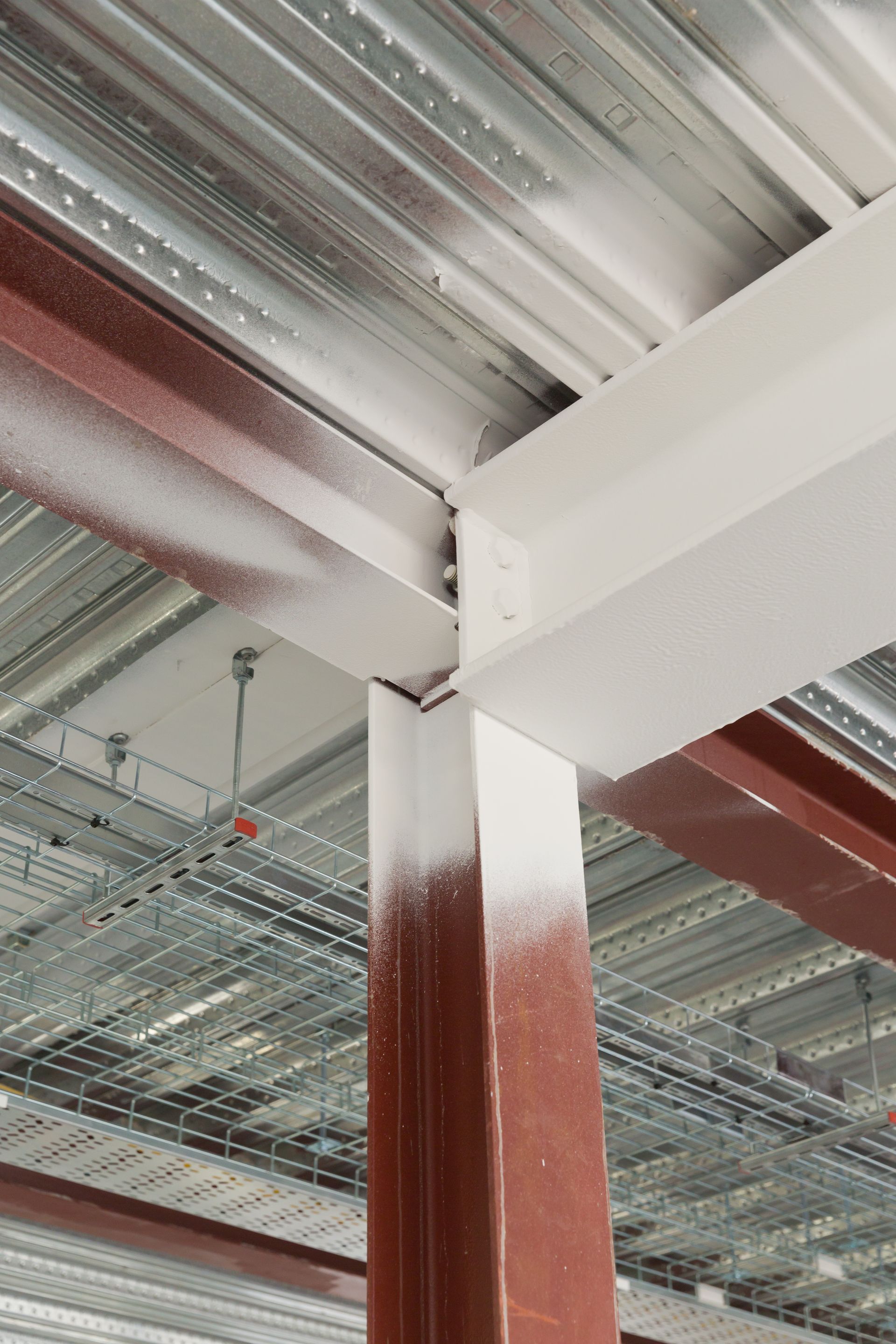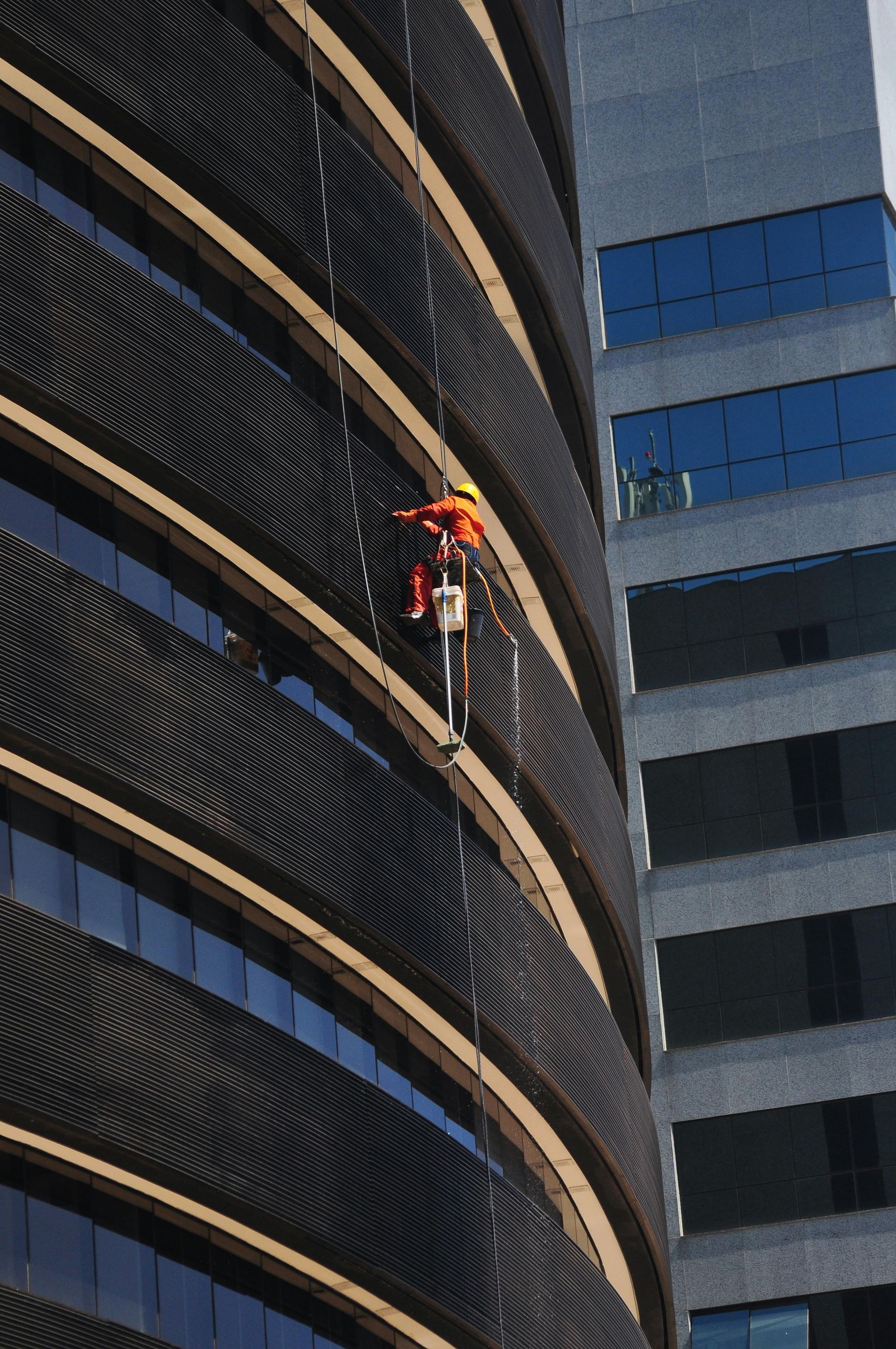The Art of Fire Protection: Intumescent Painters

The Art of Fire Protection: Unveiling the Secrets of Intumescent Painters
Welcome to the world of fire protection, where art and science converge to create a seamless and visually stunning defence against the ravages of fire. In this captivating exploration, we delve into the secrets of intumescent painters, the master craftsmen who meticulously apply a special type of paint that transforms into a formidable shield when exposed to heat. From museums to high-rise buildings, these skilled artisans play a crucial role in safeguarding our most cherished spaces. With an expert hand and an eye for detail, intumescent painters create an invisible armour that not only enhances the aesthetic appeal of a structure but also buys crucial time during a fire emergency. Join us as we unravel the intricacies of this ancient art form, uncover the cutting-edge techniques employed by these modern-day alchemists, and gain a newfound appreciation for the unsung heroes who protect our world with their brushstrokes. Get ready to be amazed by the artistry of fire protection!
Understanding fire protection and the role of intumescent paint
Fire protection is a critical aspect of building safety, and it involves measures to prevent, control, and suppress fires. While fire alarm systems, sprinklers, and fire extinguishers are commonly known tools for fire protection, there is another vital element that often goes unnoticed - intumescent paint. Intumescent paint is a specialised coating that expands and forms a foam-like layer when exposed to high temperatures. This layer acts as an insulator, protecting the underlying substrate from the extreme heat of a fire.
Intumescent painting plays a crucial role in fire protection by providing passive fire resistance. Unlike active fire suppression systems, such as sprinklers, which require an external trigger to activate, intumescent paint is always in place, ready to act as a barrier when needed. This makes it an essential component in fire-resistant building designs, ensuring that occupants have enough time to evacuate safely and emergency responders have time to control the fire. But how exactly does intumescent paint work? Let's find out.
How does intumescent paint work?
Intumescent paint is a sophisticated blend of various chemicals that react when exposed to high temperatures. The paint typically contains a combination of binders, fillers, and fire-retardant additives. When heated, these substances undergo a chemical reaction, causing the paint to expand rapidly. This expansion creates a layer of foam-like carbonaceous char, which acts as an insulator, shielding the substrate from the intense heat of the fire.
The process of expansion and charring provides several benefits. Firstly, the foam-like layer formed by intumescent paint creates a barrier that prevents oxygen from reaching the substrate. Since fire requires oxygen to sustain itself, this barrier effectively starves the fire of its fuel, slowing down its progression and buying valuable time. Secondly, the char layer acts as an insulator, reducing the transfer of heat to the substrate. This insulation property is crucial in protecting the structural integrity of the building, as excessive heat can weaken the materials and lead to structural collapse.
Advantages of using intumescent paint for fire protection
Intumescent paint offers numerous advantages over other fire protection measures. Firstly, it provides a passive fire resistance system that does not rely on external triggers or human intervention. Once applied, the paint remains in place, ready to activate in the event of a fire. This makes it a reliable and low-maintenance solution for fire protection.
Furthermore, intumescent paint offers design versatility. Unlike bulky fireproofing materials or unsightly fireproof coatings, intumescent paint can be applied in a thin layer, blending seamlessly with the surrounding surfaces. This allows architects and designers to incorporate fire protection measures without compromising the aesthetic appeal of a space. Intumescent paint can be applied to a wide range of substrates, including steel, concrete, wood, and even composite materials, making it a versatile solution for various building types and structures.
In addition to its fire resistance properties, intumescent paint also provides additional benefits such as corrosion protection. Many intumescent paints are formulated with anti-corrosive properties, offering an added layer of defence against the elements. This not only extends the lifespan of the protected structure but also reduces the need for frequent maintenance and repairs.
Types of surfaces suitable for intumescent painting
Intumescent paint can be applied to various surfaces, and its effectiveness depends on the substrate's composition and fire rating requirements. The most common surfaces suitable for intumescent painting include steel, concrete, wood, and composite materials.
When it comes to steel structures, intumescent paint is often the preferred choice for fire protection. Steel has a high thermal conductivity, meaning it heats up quickly and transfers heat rapidly. Intumescent paint provides an effective solution by forming a protective layer that delays the transfer of heat to the steel substrate. This buys crucial time during a fire emergency, allowing occupants to evacuate safely and giving emergency responders a better chance to control the situation.
Concrete structures also benefit from intumescent paint as concrete is a non-combustible material. However, concrete can lose its strength when exposed to high temperatures for an extended period. Intumescent paint helps insulate the concrete, preventing it from reaching its critical temperature and preserving its structural integrity.
Wood is highly combustible, making it particularly vulnerable to fire. Intumescent paint provides a reliable defence against fire by creating a protective barrier that slows down the ignition and combustion of the wood. This is especially important in spaces where the aesthetic appeal of exposed wood is desired but fire safety cannot be compromised.
Composite materials, such as those used in modern architectural designs, often present unique challenges when it comes to fire protection. Intumescent paint can be customised to suit the specific requirements of composite materials, offering an effective and aesthetically pleasing solution that meets fire safety standards.
Step-by-step guide to applying intumescent paint
Applying intumescent paint requires precision and expertise to ensure its effectiveness. Here is a step-by-step guide to the application process:
1. Surface Preparation: Before applying intumescent paint, the surface must be clean and free from dust, grease, and loose materials. Any existing coatings or corrosion must be removed, and the surface should be primed if necessary.
2. Basecoat Application: The first layer of intumescent paint is the basecoat, which provides the necessary fire protection. The basecoat is typically applied in multiple thin layers to achieve the desired fire rating. Each layer must be allowed to dry before applying the next.
3. Topcoat Application: Once the basecoat has dried, a topcoat is applied to provide additional durability and aesthetic appeal. The topcoat can be customised to match the desired colour and finish of the surface.
4. Drying and Curing: After the topcoat is applied, the painted surface must be allowed to dry and cure according to the manufacturer's instructions. This ensures that the paint fully develops its fire resistance properties.
5. Inspection and Certification: Once the paint has dried and cured, the painted surface should be inspected to ensure proper coverage and adherence to fire safety standards. A certification may also be issued to verify the fire resistance rating of the painted surface.
Factors to consider when choosing an intumescent paint product
When selecting an intumescent paint product, several factors should be taken into consideration:
1. Fire Rating: Different applications require different fire ratings. It is essential to choose an intumescent paint that meets the specific fire safety standards and requirements of the project.
2. Substrate Compatibility: Not all intumescent paints are suitable for all substrates. Consider the composition of the surface to be painted and ensure that the selected paint is compatible with it.
3. Aesthetic Requirements: While fire protection is the primary goal, the visual appeal of the painted surface should not be overlooked. Choose an intumescent paint that can be customised to match the desired colour and finish.
4. Durability and Maintenance: Consider the expected lifespan of the painted surface and the maintenance requirements of the chosen intumescent paint. Opt for a product that offers long-lasting protection and requires minimal upkeep.
5. Compliance and Certification: Ensure that the selected intumescent paint meets the necessary industry standards and has the appropriate certifications for fire resistance.
Common misconceptions about intumescent painting
Despite its widespread use and effectiveness, intumescent painting often faces misconceptions. Let's debunk some of the common myths surrounding intumescent paint:
1. Intumescent paint is only for industrial applications: While intumescent paint is commonly used in industrial settings, it is also suitable for commercial, residential, and even historical structures. Its versatility allows it to be applied in various architectural designs without compromising fire safety.
2. Intumescent paint is unsightly: Intumescent paint can be customised to match the desired colour and finish of the surface, ensuring that it seamlessly blends with the surrounding aesthetics. It can be virtually indistinguishable from regular paint, making it a visually appealing fire protection solution.
3. Intumescent paint requires frequent maintenance: Intumescent paint is designed to provide long-lasting protection, reducing the need for frequent maintenance. However, periodic inspections should be conducted to ensure the integrity of the painted surface.
4. Intumescent paint is only effective for a limited time: Intumescent paint offers prolonged fire resistance, providing valuable time during a fire emergency. The duration of protection depends on the fire rating of the paint and the specific application.
Maintenance and inspection of intumescent painted surfaces
While intumescent paint requires minimal maintenance, regular inspections should be conducted to ensure the integrity of the painted surface. Here are some key points to consider:
1. Visual Inspection: Regularly inspect the painted surface for any signs of damage, cracking, or delamination. Any areas of concern should be addressed promptly to maintain the fire resistance of the paint.
2. Cleaning: Clean the painted surface regularly to remove dust, dirt, and other contaminants that may compromise the effectiveness of the intumescent paint. Use gentle cleaning methods that do not damage the paint.
3. Repairs: If any damage or deterioration is detected during inspections, repairs should be carried out by trained professionals. The damaged area should be properly prepared and repainted to restore the fire resistance of the surface.
4. Record-Keeping: Maintain a record of inspections, repairs, and any modifications made to the intumescent painted surface. This documentation serves as evidence of compliance and can be useful for future reference.
Case studies showcasing the effectiveness of intumescent painting
Several real-world examples demonstrate the effectiveness of intumescent painting in fire protection:
1. The Louvre Museum, Paris: The iconic Louvre Museum in Paris is home to countless priceless artworks and historical artefacts. To protect these treasures from fire, intumescent paint was applied to the museum's structural elements. In the event of a fire, the intumescent paint provides crucial time for evacuation and prevents the spread of fire to the museum's valuable contents.
2. Burj Khalifa, Dubai: The Burj Khalifa, the tallest building in the world as of 2023, relies on intumescent paint to ensure the safety of its occupants. The application of intumescent paint on the building's steel framework enhances its fire resistance, allowing for a rapid and controlled response to any fire emergency.
3. Historical Buildings: Intumescent paint has been successfully used to protect historical buildings and structures without compromising their architectural integrity. By preserving the original aesthetics and providing fire resistance, intumescent paint plays a vital role in safeguarding our heritage.br/>br/>
Conclusion: The importance of intumescent painting for fire protection
Intumescent painting is a remarkable blend of art and science, offering an aesthetically pleasing and effective solution for fire protection. The skilled artistry of intumescent painters brings forth an invisible armour that enhances the beauty of our spaces while providing critical fire resistance. From museums to high-rise buildings, intumescent paint plays a crucial role in safeguarding our most cherished spaces. By understanding the intricacies of this ancient art form, appreciating the cutting-edge techniques employed by modern-day alchemists, and debunking common misconceptions, we can truly comprehend the artistry of fire protection. Let us continue to honour and appreciate the unsung heroes who protect our world with their brushstrokes, ensuring a safer future for all.
Why Choose Dangle's Academy
Here at Dangle, we pride ourselves on offering a wide range of professional and comprehensive inspection, access, coatings, and composite (IACC) industrial services and training courses to cater to the needs of both the private and public sectors. Our dedication to providing high-quality work at height solutions and training has helped us establish a strong reputation in the industry.
With a team of highly skilled and experienced professionals, we are committed to delivering exceptional results that not only meet but exceed our clients' expectations. Our on-site working at height services are designed to minimise maintenance costs in the long and short-term, allowing our clients to save on valuable resources.
Located in Belfast, Northern Ireland, our headquarters serve as the centre of our operations across Ireland. However, we also have a Dangle office based in Scotland, ensuring that we can extend our services to a wider clientele across the United Kingdom. No matter where you are located, our team is always ready to assist you with your industrial maintenance or training needs.
If you would like to learn more about how our dedicated team can help you, we encourage you to get in touch with us today. Our friendly and professional staff are always available to provide you with the information and support you require.
Contact us now to discover the Dangle difference and let us be your trusted partner in meeting your industrial service and training needs today.


